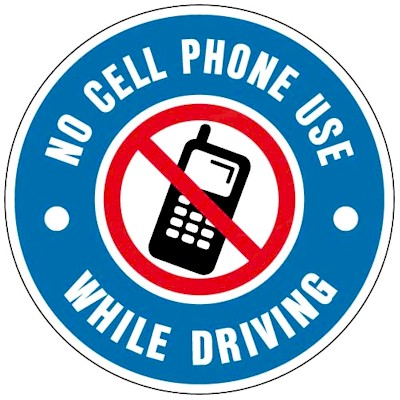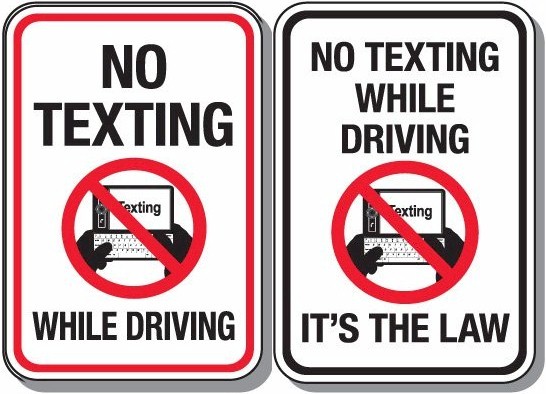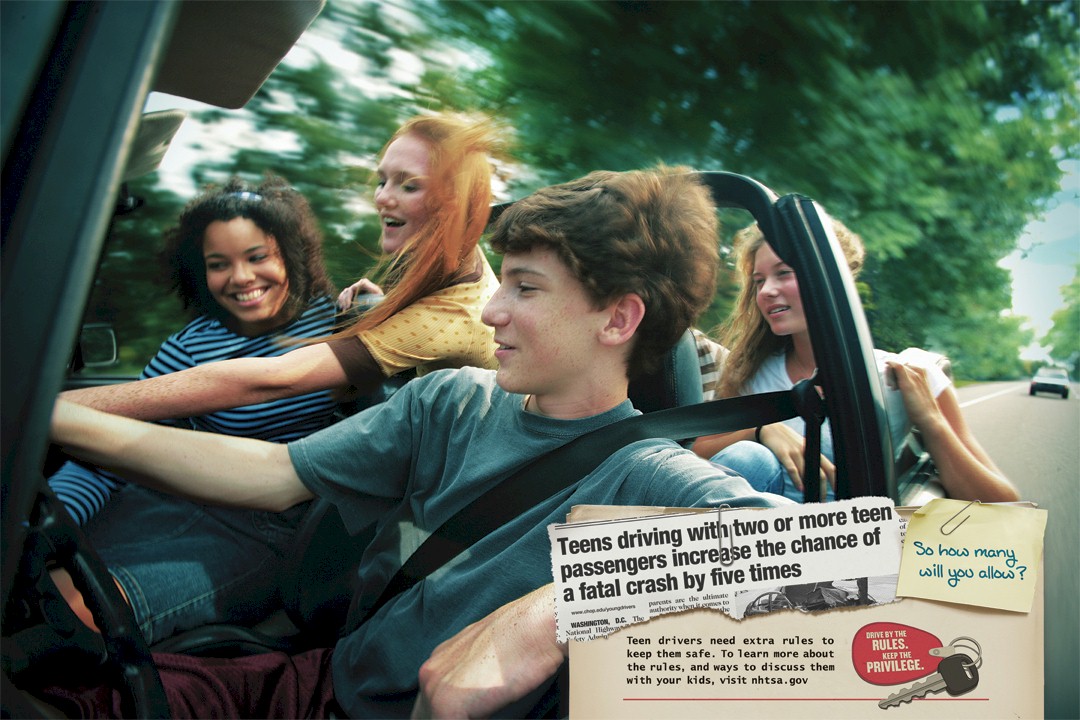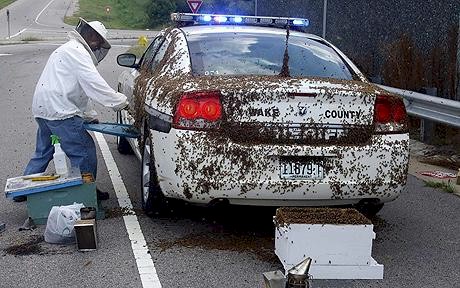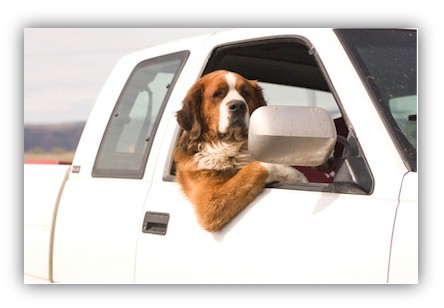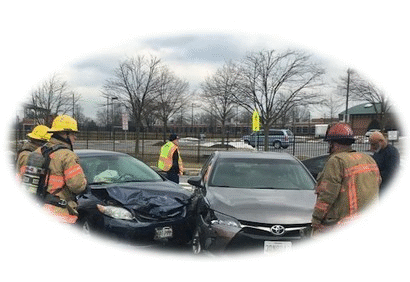Identifying Distractions that Contribute to Driver Error
...what is distracted driving?...
Do you change radio stations while you are driving? Do you ever use your cell phone while behind the wheel? Have you ever read a text while driving? If you have, you have been a distracted driver! These simple actions can have deadly consequences. You cannot drive safely unless you are fully focused on the task of driving. Any actions you take that distract you from driving - that is, any activities that cause you to take your eyes off the road, cause you to take your hands off the wheel, or cause you to take your mind off the task of driving - may result in serious consequences.
Types of Distractions
Let's take a look at some of the most common distractions that drivers are faced with on a daily basis...
Cell Phones Cell phone technology is always advancing, and cell phone use is always increasing. Ninety-six percent of all Americans now own a cellphone of some kind (Pew Research). The National Conference of State Legislatures also states that "more than 220 million people in the United States subscribe to wireless services, and it is estimated that as many as 80% of those subscribers use their phones while driving" (NCSL). Cell phone related distracted driving is estimated to account for thousands of motor vehicle crashes each year. According to an RSA research study, cell phones distract drivers in several ways:
Numbers/Statistics Hands-Free vs. Hand-Held? Bottom Line: The bottom line is that the use of cell phones significantly affects the driver's ability to focus on the task of driving - and therefore significantly increases the risk of having a crash that may cause injury or death - and should not be done in any situation!
|
|
|
|
Text Messaging (AKA Texting) Driving while texting is considered to be one of the riskiest driving behaviors because it requires the driver to become visually, manually and mentally distracted. To view and send texts, drivers are forced to take their eyes off the road, their hands off the wheel and their minds away from driving decisions-limiting their ability to react and respond to road conditions and other vehicles (Decide to Drive). The National Highway Safety Administration gives the following safety tips for texting:
Note: If you are the passenger and your driver is texting or otherwise distracted, tell them to stop and focus on the road. Always remember that texting while driving is especially dangerous because it combines all three types of distractions, visual, manual and cognitive. As mentioned previously in the course, when you send or read a text message, you take your eyes off the road for about 5 seconds, long enough to cover the length of a football field while driving at 55 mph. (www.cdc.gov)
|
Navigation Systems – Global Positioning System Devices In case you didn't know, global positioning system devices are commonly known as GPS. Many vehicles now come with GPS or navigational devices already onboard built into the dashboard. A GPS device is very helpful, but it can be just as distracting as a cell phone. If your GPS is portable be sure to place it in the proper place on your windshield, being sure to set your destination before you begin your trip. Should there be a problem with your GPS while driving, do not attempt to make an adjustment while the vehicle is moving. You should always pull off the roadway and stop before making any adjustments to your GPS. A couple of ways to avoid being distracted by your GPS are:
Passengers Your passenger(s) may be very distracting when you are driving. You could find yourself in a deep conversation about politics, work, school, money or any number of subjects that could distract you from the driving task. If you find your mind drifting, you may have to exclude yourself from the conversation. Your passenger(s) might also be distracting you by changing the radio station or even turning the heat/air conditioning to a setting more to their liking. Always remember that your main focus should be on your driving - not the individual(s) in the vehicle with you. Young drivers when driving with their friends are particularly vulnerable to passenger distractions. According to a publication funded by the World Health Organization and the NHTSA, "various studies have shown that young drivers' crash risk is significantly increased by the presence of similarly aged passengers in the vehicle". As a result, many States have adopted graduated licensing laws that limit or restrict the number of passengers allowed in a vehicle with a new driver. Advantage of having a passenger: As stated in our GPS tips, passengers can be very useful when it comes to helping with navigation… Music / Audio Devices You love music! What is more relaxing than heading down the road while listening to your favorite tunes full force on the radio? Unfortunately, if you find yourself paying more attention to the music than the other cars around you, there may be a problem. Take a deep breath and turn the volume down while keeping your eyes on the road. It is likely that your radio has become a distraction. Also, choose a station or playlist (and volume) and stay with it! Fiddling with the radio or other audio device is very distracting – as you are required to take your hand(s) off the wheel and your eyes off the road to reach for the controls. Important Safety Tip: Don’t set the volume too loud – because you might not hear certain audible signals that may indicate a road hazard – like a siren, honking of a horn, or screeching tires…
|
|
|
|
Foreign Objects in the Car - Insects While cell phones and other distracting activities are a common cause of car accidents, believe it or not, insects are another common cause for distracted driving accidents and needs to be included in this safety conversation. It doesn’t take a swarm of bees or wasps, to cause a fatal accident. All it takes is just one insect to cause an accident if it distracts the driver. Some motorists with a severe case of insect phobia simply panic and lose control of their cars – putting themselves and other road users at risk. The fear people experience with an insect phobia can be considerably amplified when driving a car, as their feelings of fear and anxiety intensify in an enclosed space, producing the potential for a severe phobic response and considerable level of panic. A major insurance survey showed that insects are the second biggest disturbance totaling $4 million in damages a year. Nearly 75% of motorists surveyed said that bugs in their car drove them to distraction to the point that 21% took their hands off the wheel, while another 4% slammed on their brakes. To avoid a distracted driving accident due to an insect in your car: If you can’t pull the car over quickly and safely, fully open all the windows to allow the insect to fly (or crawl) out. Remember to try not to panic. Do not swat the insect or wave your hands around to force the insect away. As well as making you feel more frantic, this action may irritate the insect and increase the likelihood of a sting or bite.
|
Pets Few of us consider the distraction that driving with unsecured pets can cause. A survey found that, while 64 percent of drivers admitted to engaging in a potentially distracting pet-related activity, and 29 percent admitted to being distracted by their pets, a full 84 percent allowed their pets to ride unrestrained. In the survey, drivers admitted to doing everything from petting their dogs, carrying them on their laps, to playing with them and even giving them treats while driving. Three percent of drivers admitted to taking photos of their dogs as they drove. Restraining pets in vehicles isn’t just about pets causing distracted driving. It’s about what can happen during an accident. Unrestrained pets can be seriously injured or killed if they are thrown from a vehicle. Pets carried on drivers’ laps can be crushed by the impact of an airbag. Frightened pets have been known to escape vehicles and run away in shock after accidents. Unsecured pets can also put everyone in the car in danger; during an accident, a 60-pound dog can suddenly become the equivalent of a 2,700-pound projectile.
|
|
|
|
Eating/Drinking You are in a hurry, so you grab something at the drive-in window at the local fast food restaurant. You wanted to go inside but you just didn’t have enough time. You decide you will eat on your way to your destination. Unfortunately, you have to get the food/drink out of the bag, unwrap the food item, hold the food with one hand, find a spot for the drink and at the same time you must operate your vehicle. This makes eating or drinking while driving a very distracting activity. The National Highway Transportation Safety Administration did a 100-Car Study which showed the odds ratio for the secondary task of eating at 1.57. Based on this result, eating while driving increases the crash risk by more than one and one-half times that of just driving. Grooming Distracted behaviors like putting on make-up or shaving can have serious consequences. Give yourself enough time before you get into your car to perform these activities. If you feel you must do personal grooming before reaching your final destination, pull over to the side of the road. The few extra minutes it will take are worth it! Distractions are not just in the car… Driver distractions are everywhere, not just in the car. Events happening on the roads around you, such as a vehicle being pulled over by the police, an accident, construction work, a billboard advertisement or a scenic view can all be distractions, if you let them. Always focus on your driving. It is crucial that you are alert while on the road.
|
|
Tips for Managing Driver Distraction… The Governors Highway Safety Association provides 10 tips for managing driver distraction:
Remember: You cannot drive safely unless the task of driving has your full attention. Any non-driving activity you engage in is a potential distraction and increases your risk of crashing.
|
|
|
Sources:
|
|
